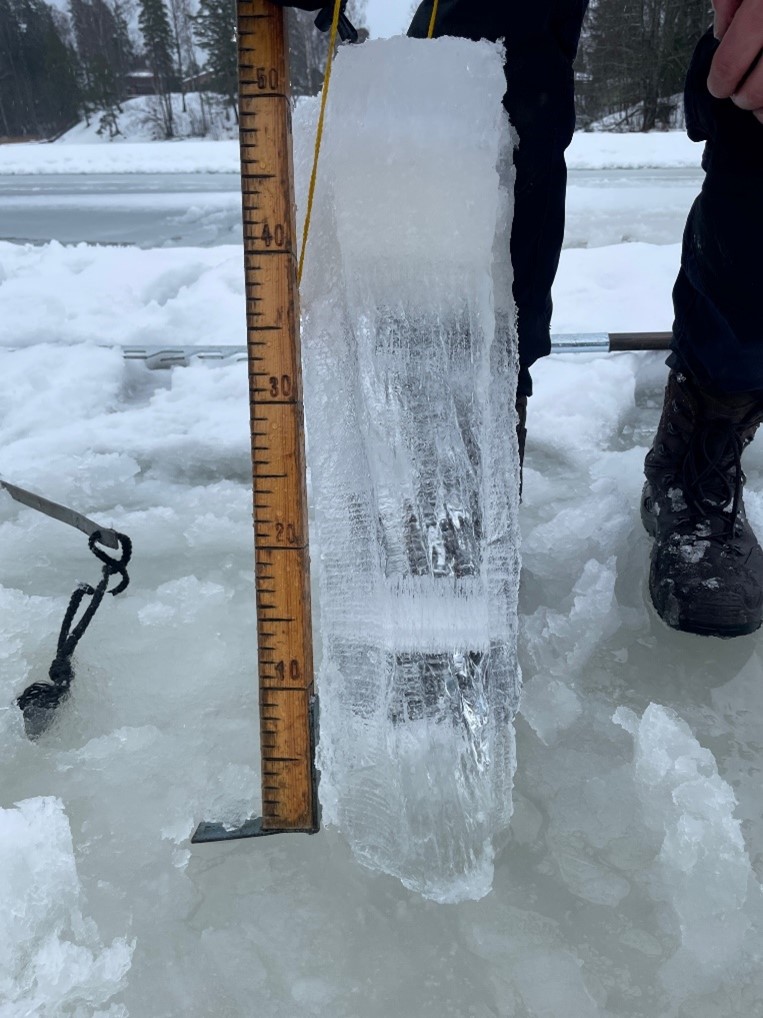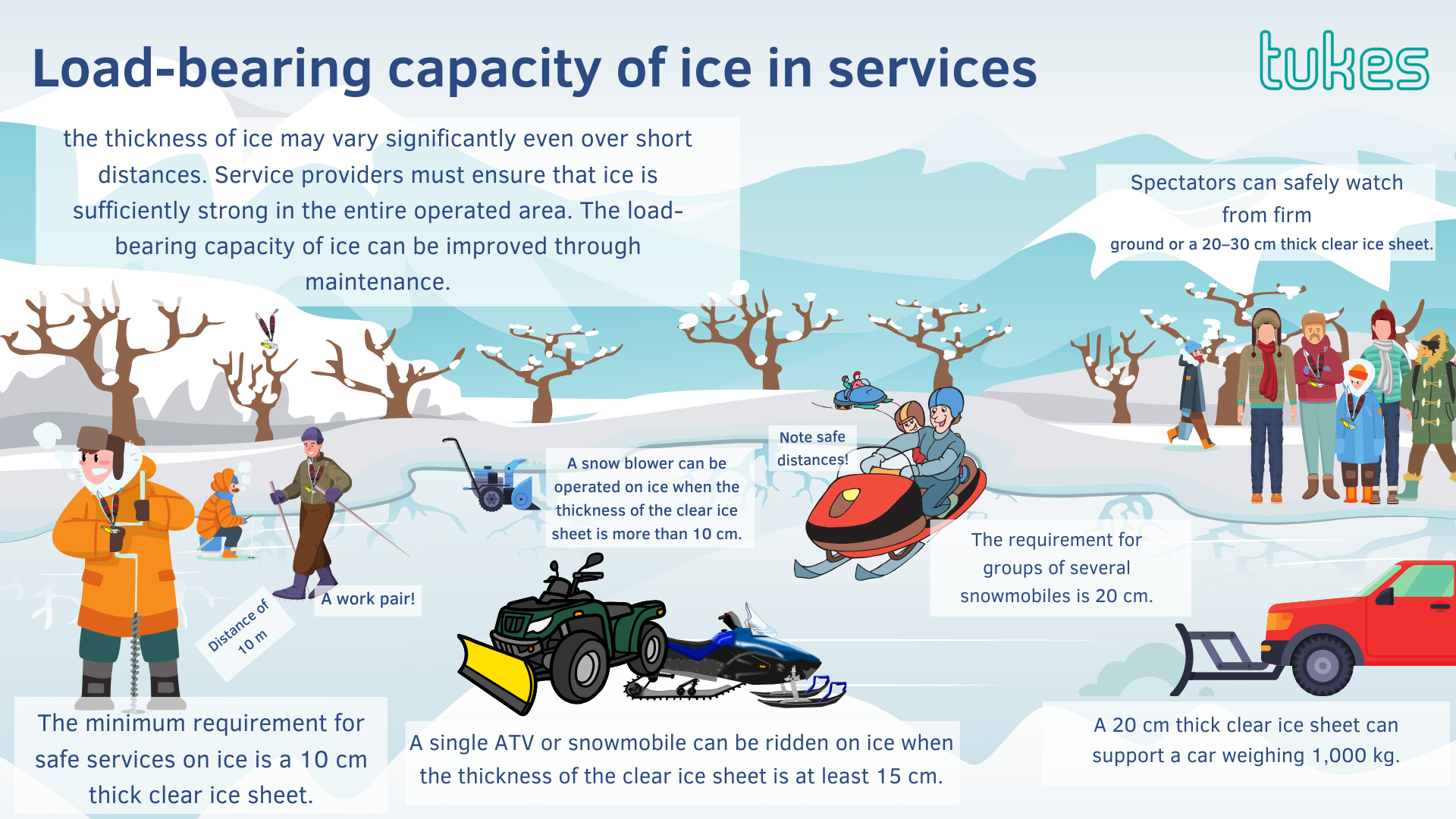Measure and monitor the load-bearing capacity of ice frequently and in many different places
It is especially important for service providers operating on ice to know the characteristics of ice: How ice is formed? What is the structure of the ice? How thick does the ice sheet have to be to have a sufficient load-bearing capacity?
The load-bearing capacity of ice must always be assessed based on clear ice. Clear ice is either clear or grey and consists of large crystals. Ice sheets are not normally formed of clear ice only. Light snow ice is significantly weaker than clear ice. If an ice sheet consists of two separate clear ice layers with air between them, their thickness cannot be summed.

A test piece of ice and its structure (photo by Antti Niemi)
In spring, even clear ice can form sticks inside it so that even a 30 cm thick sheet can break without any warning signs. Such an ice sheet looks like a pile of straws.
In addition to thickness, address other factors that affect the load-bearing capacity of ice. They have been comprehensively described in the Järki jäällä (Be smart on ice) guide of the Finnish Swimming Teaching and Lifesaving Federation. Instructions for assessing the load-bearing capacity of ice are available in the report on occupational and customer safety in natural ice conditions of VTT Technical Research Centre of Finland.
Measuring the thickness of ice
The thickness of ice can only be verified by measuring it. Plan how and where to measure the thickness of ice as required by the special characteristics of the ice area, the weather conditions and the activities planned to be carried out on ice. Measure by drilling or sawing a hole in the ice and assessing the composition of ice and the thickness of the clear ice layer from the cross-section.
A single measuring point or measurement is not enough. Ice must be monitored and measured in several different locations, throughout the ice area used and throughout the time activities are carried out on ice. The thickness of ice may vary greatly over a short distance due to water flows and the quality of the bottom of the waterbody. When measurements are conducted at sufficient distances and repeatedly in the same locations, any local variation in thickness can be identified.
Register the measurement method, frequency and measuring points in the safety document. The ice measurement results should also be recorded to monitor the development of the ice sheet. Such records also help during following winters.
Measurements must especially be conducted when
- the temperature has risen by more than 10 ˚C during the last 10 hours;
- the air temperature has been more than 0 ˚C during the last 10 hours; and
- wind speeds have been particularly high in the previous days (more than 14 m/s).

